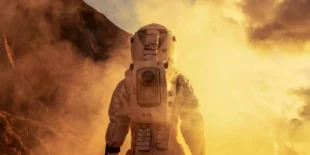A vast Maya city has been discovered hidden beneath a dense forest in southern Mexico. Named Valeriana, this ancient urban center spans an area comparable to Beijing and exhibits classic features of a Maya political capital, according to an October report in *Antiquity*. Key structures within the site, including interconnected plazas, temple pyramids, and a water reservoir, suggest it would have been impressive to Maya people over 1,500 years ago.
Archaeologists have long known about ancient urban sites in the Maya Lowlands of southern Mexico. But this discovery was somewhat unexpected. Luke Auld-Thomas, an archaeologist at Tulane University, stumbled upon a dataset by Nature Conservancy Mexico (TNC Mexico) that analyzed carbon data in the region, which hinted at potential archaeological structures. His hypothesis led to the discovery of the expansive city.
This dataset relied on lidar technology, which uses laser beams from aircraft to map variations in terrain. While TNC Mexico’s focus was on mapping forest density, the lidar scans that reached the forest floor revealed the outlines of structures, allowing Auld-Thomas and his team to create a topographic map tailored to archaeological exploration.
Valeriana, nestled in a larger Lowlands area, appears to have been densely inhabited. The site contains over 400 structures per square kilometer, which exceeds the density found in most of the surrounding Maya regions and is second only to Calakmul, a major Lowlands city near the Mexico-Guatemala border with approximately 770 buildings per square kilometer.
David Stuart, an anthropologist from the University of Texas at Austin, noted that this discovery helps illustrate how the Maya arranged their cities across the landscape. The discovery adds weight to the idea that Maya Lowlands were populated with significant urban centers beyond Calakmul. Stuart pointed out that this finding aligns with earlier archaeological suggestions of high population density in the area.
Thomas Garrison, also from the University of Texas, highlighted the importance of lidar in advancing archaeological research. He praised the study as a prime example of lidar’s value, even when collected for environmental rather than archaeological purposes.
Such technology enables researchers to visualize previously hidden parts of Maya civilization. However, Garrison emphasized that further investigation is needed: visiting and excavating these sites will provide a fuller understanding of the settlement and its role in Maya history.


